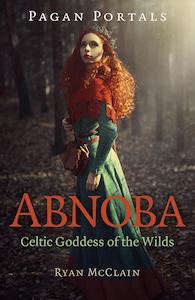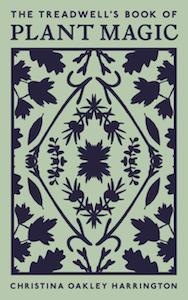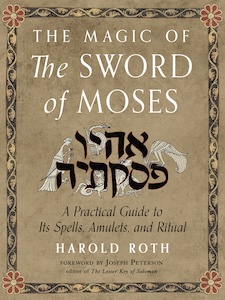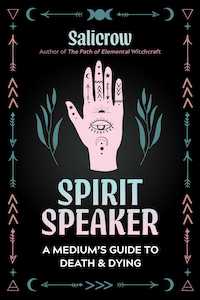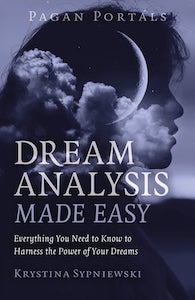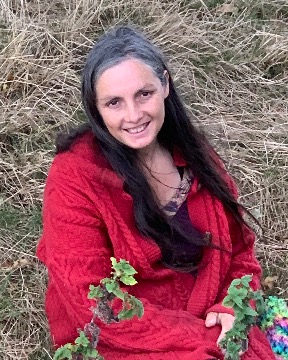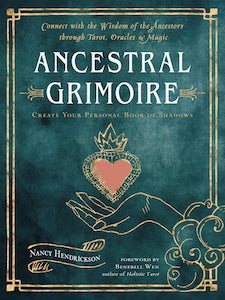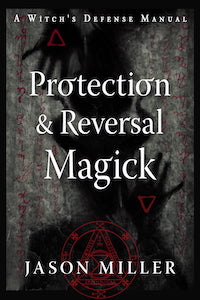
Protection & Reversal Magick (Revised and Updated Version): A Witch’s Defense Manual, by Jason Miller
Weiser Books, 978-1578637997, 224 pages, March 2023
“I wrote this book to give you better protections and protocols, not to sow fear and paranoia. May the knowledge in the book aid you in staying safe on your journey, but also remind you that there is no such thing as being completely safe.”1
Protection & Reversal Magick (Revised and Updated Version): A Witch’s Defense Manual by Jason Miller is the newly revised version of what has become a classic book regarding magickal work to protect and ward. This edition features a new introduction by the author and updates to the chapters.
I greatly appreciated the titling of “ New Edition Commentary” at the end of each of the chapters. This provided a user-friendly tool for those who have read the original version, so they could read this version without having to pore through the material trying to identify what has been added.
Additionally, the Introduction to the New Edition, lays the groundwork for the “why” of updating the very successful tome written in 2006.
“We are no longer live in a purely traditional culture. Modern modes of communication and travel have made the world much smaller than it was. The chance that a Santero or Peruvian shaman will cross paths with a Jewish Kabbalist or British witch is now a very real possibility … Without going out of my way to seek anyone out specifically, I was exposed to a Rosicrucian teacher, a rootworker, a Santera, a Buddhist ngakpa, and several different Wiccans all within central New Jersey, and all before I was twenty years old.”2
Overall, the general focus of the book is one of approaching magick from a practical perspective, just as you would with your mundane endeavors and taking the necessary precautions to ensure that you are safe and out of harm’s way to the best of your abilities. Much of what Miller addressed in the original version is still true and of solid recommendation today, but the complexity of our society and interactions requires particular attention and nuances to address the ever-growing needs exponentially growing from fear, anger and stress.
Protection & Reversal Magick is thoughtfully divided into nine chapters that take the reader through the basics of awareness and identification of a magickal, psychic or spiritual personal attack of magick, and the daily practices that support and protect your work. And, because of the extensive work that Miller does with Hekate, the reader will find the book filled with spells, rituals, and other workings aligned with the goddess in Her many guises and those spirits and beings who serve her.
“Chapter 3: Personal Protection” provides the reader with a selection of protective tools, spells, and rituals, including discussion of shielding, amulets and talismans, invisibility, and cleansing and protection baths. The updated commentary of this section is one of caution that if you are already under attack, protection spells alone will not suffice and that a method of cleansing and purification are required as well.
As the reader moves through subsequent chapters, much of the information and workings gather more depth and require a more nuanced approach. In this way, Protection & Reversal Magick becomes not only a tool of effective magick for protection, but also a wonderful teaching guide of exposure to some facets of magick that not all practitioners are aware of such as exorcisms (as they relate from a non-catholic perspective), servitors, and complex talismanic magick. The information given is reflective of Miller’s diverse magickal background and, as such, offers new areas of exploration for some and a deepening of what is known for others.
Just as there was very little to be improved upon from the content of the first publication, there is very little commentary to be made about the expansion of material. The new commentary is rich with Miller having the perspective of additional years of fine tuning and trial and error. Protection & Reversal Magick is one of those staple texts that should grace the library of anyone who practices magick. If you want to find out more about Miller, his books and online offerings can be found at StrategicSorcery.net.

Robin Fennelly is an Elder within the Assembly of the Sacred Wheel Tradition [www.sacredwheel.org]. She is a dancer, teacher, astrologer, author, ritualist and seeker of all things of a spiritual nature. Her writings and classes incorporate a deep understanding of Eastern practice and Western Hermetics and bring a unique perspective towards integration and synthesis of the Divine and Mundane natures of our being. She is a mother of five and lives in Eastern PA with her husband of 45+ years.


